Shining a Spotlight on Mexico’s pandemic heroines
Date:
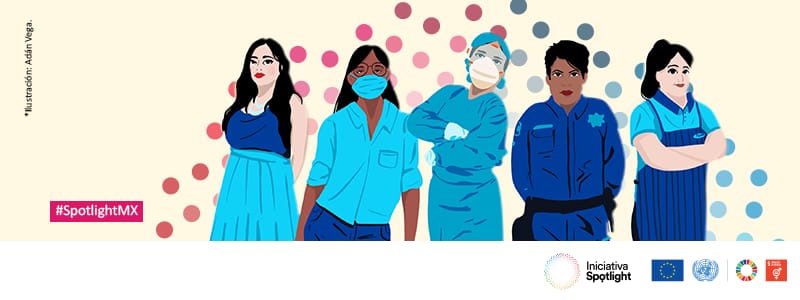
As COVID-19 ravages the world, Mexico is among the countries hardest hit. Despite the myriad ways this global crisis is devastating women and girls, it has also served as a powerful reminder of the essential contributions of women. The women featured in this article represent just some of Mexico’s many pandemic heroines.
The nurse on the front lines
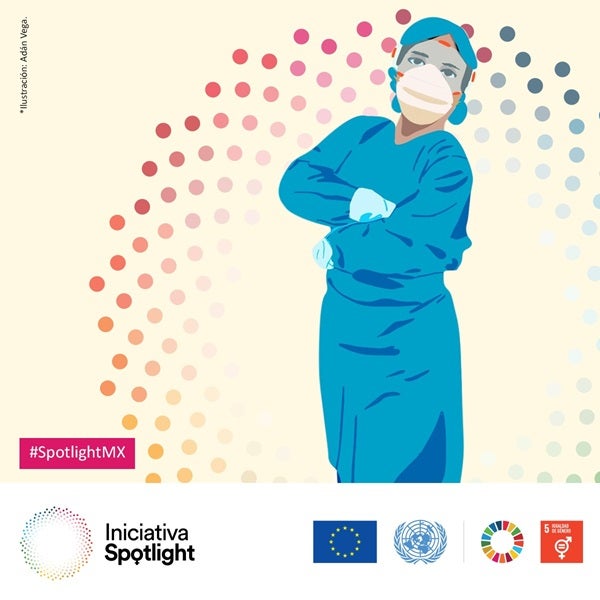
Brenda Abad, 25 is a nurse at a public hospital in the State of Mexico, who since her first day on the job was assigned to a post to detect those infected by COVID-19.
“At the beginning I was very scared of catching the disease and being contagious, but in the end you have to do your job and you’re trained for it,” she says.
Abad is among Mexico’s nearly 500,000 nurses, of whom 79 per cent are women and 21 per cent are men.
With a salary of 6,000 MXN pesos a month (USD 273), she supports her 6-year-old son and elderly grandmother, whom she is not able to hug for fear of infecting them.
The maquiladora worker breathing life
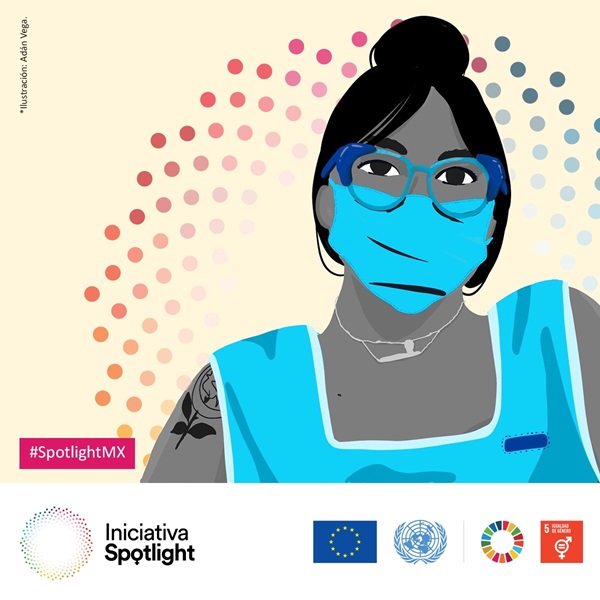
Despite being asthma-prone, Julia* has to go to work to help others in the midst of the pandemic. Her job is to make the tubes that connect to respirators. She works many extra hours: “you have to come in on Saturday, you have to come in on Sunday. This week almost everyone complained about unpaid overtime.”
In Mexico, 6 in 10 economically active women don’t have access to formal jobs.
“I like to believe I’m doing something for other people’s lives, but I’m scared. My mom is asthmatic too ... if I get her sick and I get sick ... I don't know if she’d make it. … Is it really worth exposing her for a minimum wage?” Julia doesn’t rule out resigning.
* Julia is a pseudonym to protect her identity because she fears retaliation at work.
The police champion of Code Violet
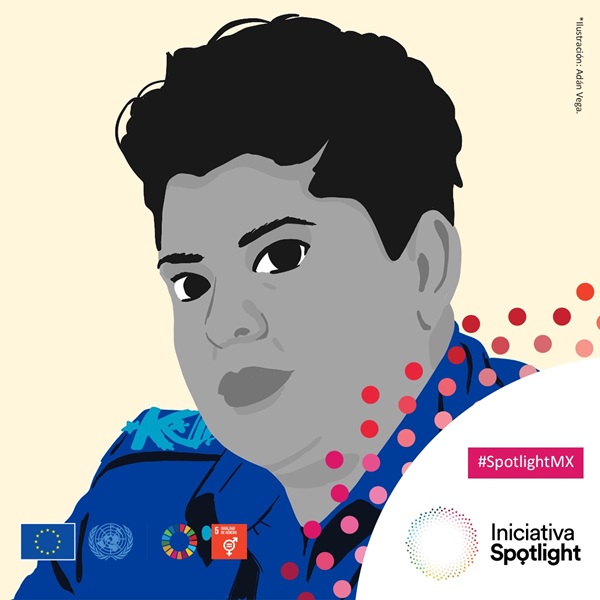
Violeta Castillo is one of the two highest-ranking female police officers in the Jalisco Public Security Secretariat. Her latest mission is Code Violet, a new protocol that alerts authorities to calls from women caught with their aggressors. When dialing 911, they need only say “Code Violet” for a specialized team to be deployed immediately.
According to the National Shelter Network, helpline calls increased by 80% during the first month of confinement in Mexico.
“We try to ensure that the majority of the first responders are women, to interact with the victim as an authority and as a woman. This facilitates the flow of information, which is essential to do the investigation,” explains Castillo.
The intrepid photographer
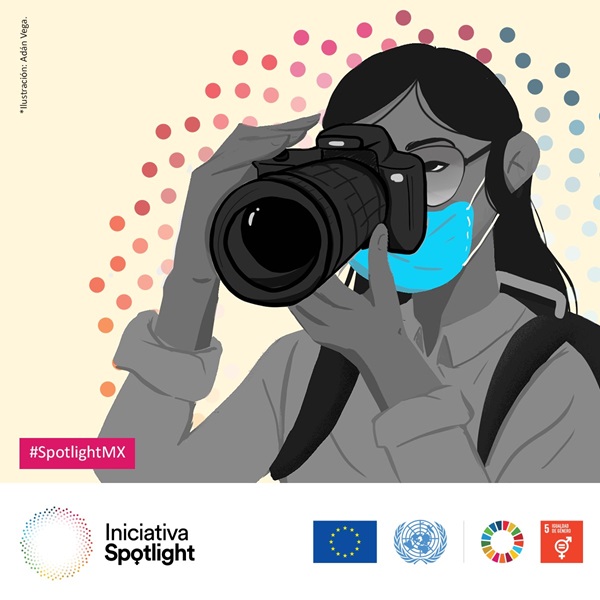
Jessica Natividad Torres Barrera is a photojournalist in Chilpancingo. Since March, before leaving home to photograph the pandemic, she reviews not only her own security protocols due to the context of violence in Guerrero, but she now also wears a mask, plastic gloves and a disinfecting liquid that she made herself.
She is the only woman among the newspaper El Sur’s four photojournalists. She only rests one day a week and works scattered hours.
Torres Barrera confesses feeling stressed about whether she’s taking the right precautions: “In the end, you shouldn’t be just another number. You need to tell the story, not be the story,” she says.
The single mom balancing paid and unpaid work
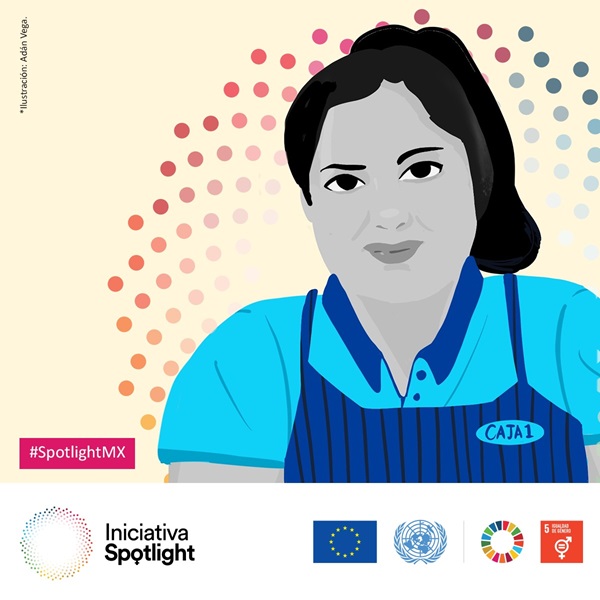
Linda* sleeps only once a week with her children. As a single mother who lives with her parents and works in a 24-hour supermarket in Ciudad Juárez, Chihuahua, she spends most nights in front of a cash register, from 10 pm until 6 am.
Before the pandemic, Julia’s routine involved arriving home to make breakfast. “It was: get the kids up, cleaned, uniformed and ready for school.” While they were at school and she slept just five hours, because after picking them up, her double shift started with household chores. Now she has a third shift, as an improvised teacher, since schools are closed.
In Mexico, women perform 39 hours a week of unpaid care work on average – three times as much as men (13 hours). Amid COVID-19 measures, this invisible burden is increasing.
* Linda is a pseudonym to protect her identity because she fears retaliation at work.
The voice at the other end of the line
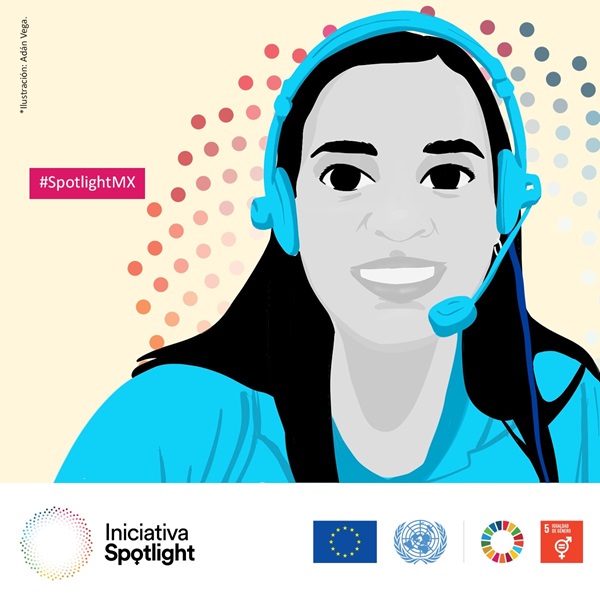
Diana Macías Santos’ voice is soft and calming – an important quality for answering calls to the Woman and Family Hotline of the Citizen Council for Security and Justice in Mexico City. As a professional psychologist, she has to assess risk levels and sometimes has to pretend she’s an acquaintance, when aggressors come on the line.
During the pandemic, she says calls have tripled because, “many women are with their aggressor all the time, without their support networks.”
“What I like most is being able to be a support and accompany them to make a complaint ... I get satisfaction when I see their faces and they say: ‘thank you, I already feel more secure’,” concludes Macías Santos, on the other side of the line.
To help prevent gender-based violence during COVID-19, the video #NoEstásSola (#You’reNotAlone) was launched through the Spotlight Initiative in Mexico. It aims to reassure at-risk women that there are institutions and organizations ready to provide services and keep them safe, and that the entities involved in the Spotlight Initiative are redoubling their efforts.
These stories were captured as part of UN Women Mexico’s efforts to preventing gender-based violence and changing social norms – two of the main goals of Mexico’s Spotlight Initiative, which is being implemented by UN Women, UNDP, UNFPA, UNODC, OHCHR and UNICEF, in coordination with the Government of Mexico, with generous funding from the European Union.
The Initiative has also developed a COVID-19 Response Planto face the new challenges that this health, social and economic crisis has created for the safety of women and girls.